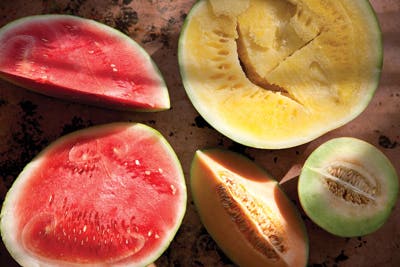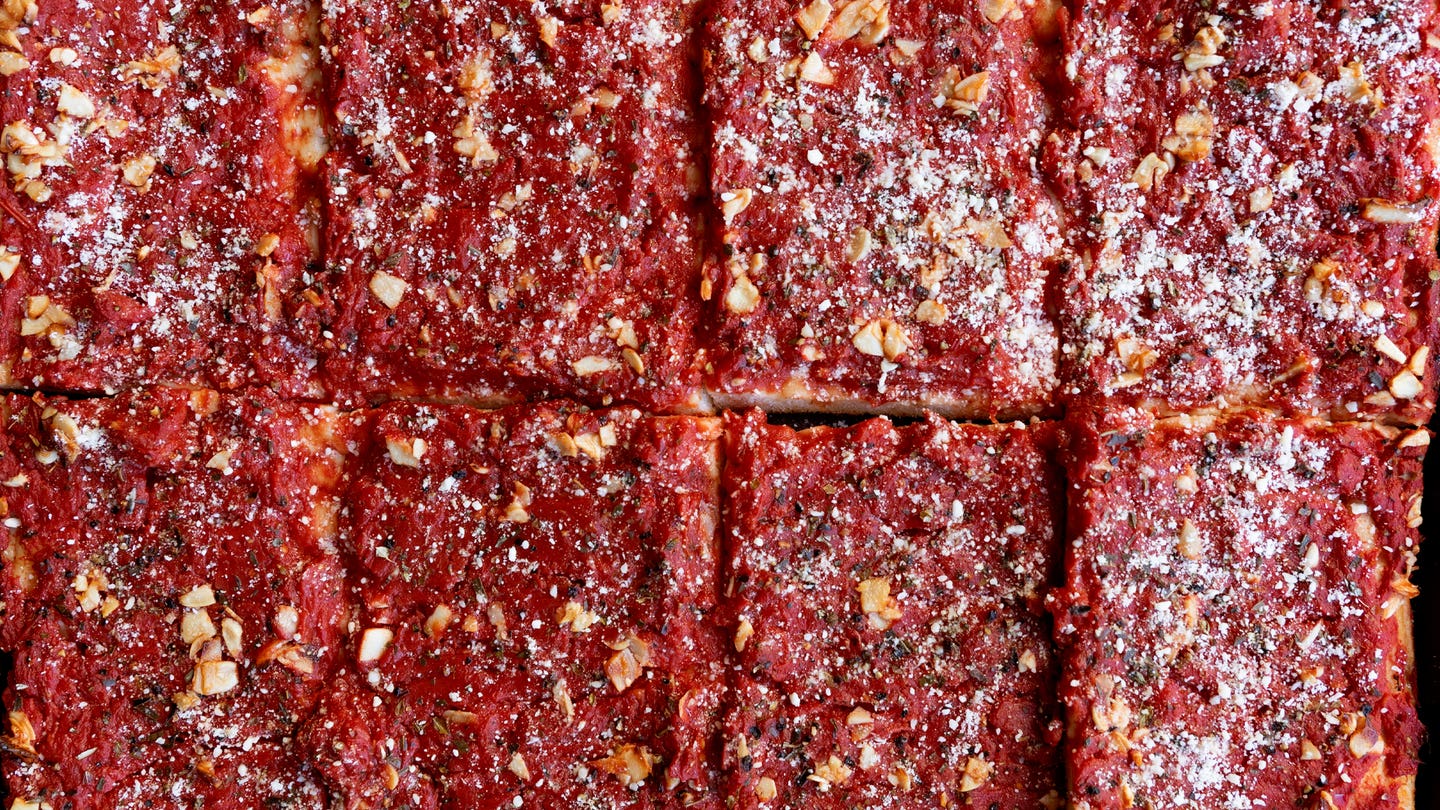
Fruits of Desire
Each summer, I grow six or eight varieties of melon to sell at the farmers' market in Davis, California, outside Sacramento. Over the years, I've grown about 60 different kinds, trying to discover which ones will thrive in the growing conditions I have to work with.
One year I grew a small, smooth-skinned, golden melon from the Crimea, in southern Ukraine. I found these melons to be disappointing, but I brought them to the market anyway. A portly older customer spied a few on my table and asked me where they were grown. "I grow them a few miles west of here," I said, "but the seeds came from Ukraine."
"I'm from Ukraine," he said. "They look just like the melons from home. Let me take a few."
The following week, the man was at the market an hour before it opened. "Do you have those golden melons?" he asked.
"A few," I said. "Maybe forty or fifty."
"I'll take them all. They are exactly the melon we have at home. There are many people from Ukraine living in Sacramento. They will be amazed!"
For the rest of the season, he was there at the start of each market and bought all the little golden melons. He confided to me, in a low voice, "Everyone is crazy to know where I get these, but I won't tell them. Only you and I know." He winked at me, and I wondered whether this guy was now in the melon-selling business himself.
Some customers stand before the display of melons almost in a trance, with dreamy looks in their eyes and smiles on their faces as they caress and fondle the melons, perhaps holding one against their cheek. And why not? All fruit evolved largely with the goal of being so attractive that you would want to put it into your mouth. The buxom shapes, the sensuous surfaces, the alluring fragrances, the promise of sweetness—these are the classic tools of seduction. The melon knows exactly what it's doing.
And yet, there are many customers who handle the melons unkindly, squeezing and poking them, frowning, searching for imaginary flaws, suspicious that the farmer is trying to cheat them, digging around in the crate to see if there is a better one underneath. It is the old Puritan heritage: a distrust of pleasure. As a fondler and caresser of fruit, I am mystified by the pinchers and pokers—such unhappiness they choose for themselves.
A woman in her late fifties, with helmet hair and a Midwestern accent, comes to my stand and pinches and pokes the melons, frowning. She says, "I'm looking for a classic, old-fashioned cantaloupe. No one seems to grow it here."
"Describe it for me," I say.
"It's about this big"—she holds her hands several inches apart—"and has sort of salmon orange flesh, very firm."
"I think I know what you're looking for. Talk to Eric down there on the right." The melons that I grow are sweet, sloppy, juicy, aromatic, perishable, best eaten at the temperature of an August night, standing over a bathtub. What she's after is a melon that would be described in the wholesale seed catalogues as a shipping and storage melon. It is harvested much too green and stored at much too cold a temperature and then shipped to a city thousands of miles away, where it will be served at the breakfast buffet of an airport hotel. All in all, a miserable excuse for a melon. And yet, this is probably what she has known all her life, and people search for what they are accustomed to. When it comes to judging food, lifelong familiarity is worth three or four points on a ten-point scale.
A couple approach. The husband, a fondler and caresser, picks up a smooth, yellow-skinned Charentais melon, inhales its fragrance. "These smell fantastic," he says. He turns to his wife. "Let's get a couple of them."
The wife pinches the clasp of her purse with both hands. "No," she says, "we couldn't eat that much. Remember, we'll be away on Saturday."
I'm thinking to myself, the two of you couldn't eat a pair of these little melons in three days? I eat one by myself in about three minutes, standing in a muddy field with my pocketknife in my hand, cutting off slices and tossing the chewed rinds in every direction. And 20 minutes later I eat another one.
Mohammed, a Pakistani immigrant who drives an ice cream truck that plays "Maple Leaf Rag" so relentlessly that by now the tune must have penetrated to his very DNA, buys ten, 12, 14 melons every week, sometimes 20. "Do you eat all those yourself?" I ask. He nods happily. I charge only a dollar each for melons, but I give Mohammed a break on the price; I know that he earns even less than I do.
Most years I grow a row of a melon from Afghanistan called a kharbouza. It's a big melon, ten or 12 pounds, and problematic to grow. The flesh is green, crisp, refreshing, not overly sweet. I bring a few to market but keep them in my truck. People have to ask for them. Over time, immigrants from Afghanistan, Iran, Uzbekistan, and even far-western China have learned that I have these rare melons, hidden.
One evening at the market a young Afghani student comes to my stand. "I bought a kharbouza melon from you last week," he says.
"Yes, I remember," I say. "How was it?"
"I took it home to Fremont for my grandfather. Every summer he gets together with a bunch of other old Afghani men and they recite the Koran, the whole thing. It takes three days. It was the third day, and they had just reached the very last words when I walked in and said, 'Grandfather, I've brought you a kharbouza melon.' All the old men jumped up and shouted, 'It's a miracle! God has heard us!' And then they cut the melon and shared it among themselves, and they sat on the floor reminiscing about home." —Mike Madison, author of Blithe Tomato_ (Heyday Books, 2006)_
Keep Reading
Continue to Next Story










